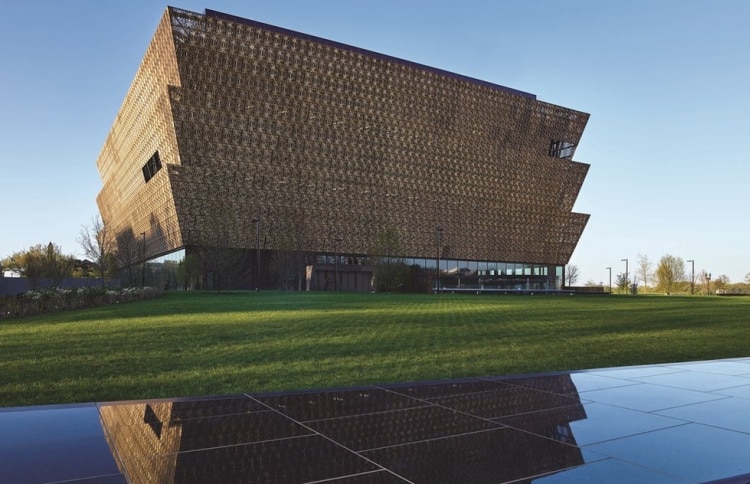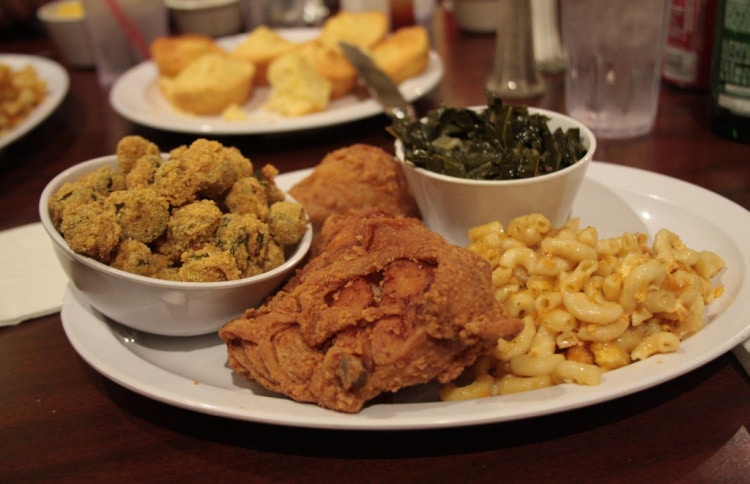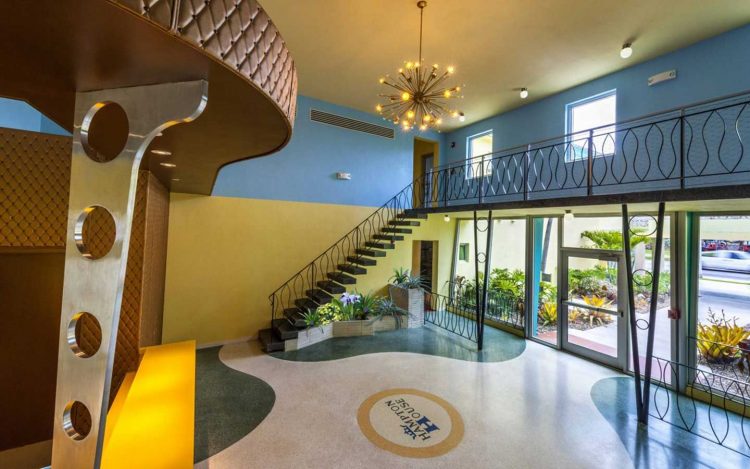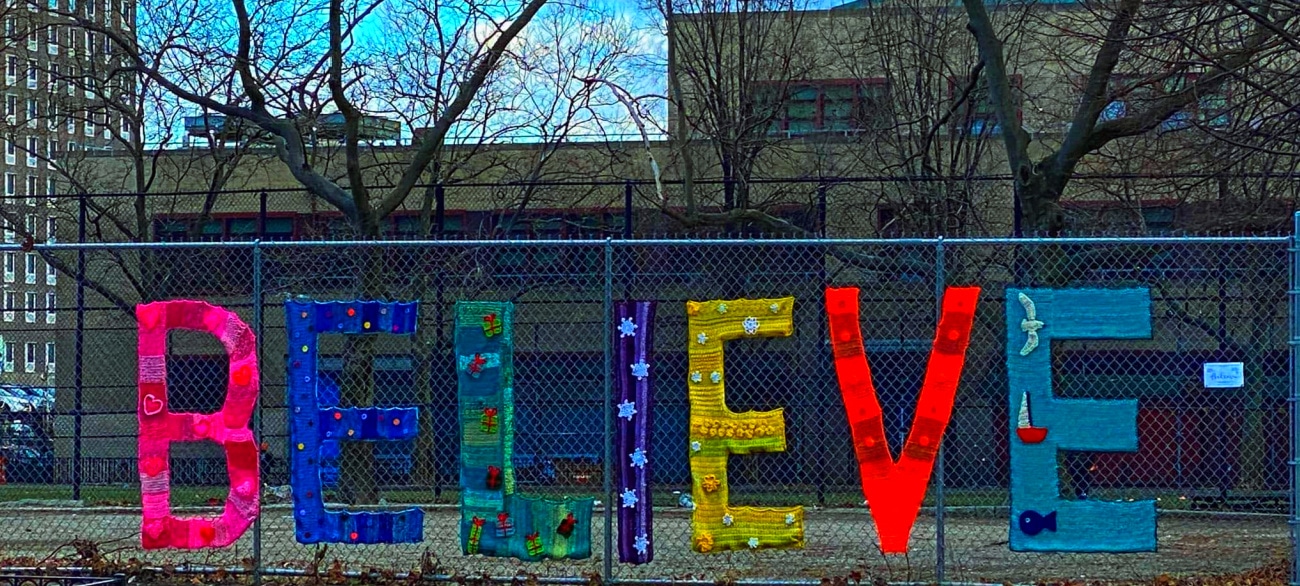Born in a North Georgia hospital with Confederate cannons on the porch, I never imagined I would one day live in Harlem just blocks from Grant’s Tomb. Being southern and white, I also never imagined I would one day marry a black man. Life takes unexpected turns, doesn’t it? And with those turns, sometimes you learn more about yourself and the world around you than you ever thought possible.
Twelve years into this relationship, my sensitivity to the issues of Black Americans continues to evolve. My appreciation for the colorful quilt of cultural treasures brought to our society through the Black community increases with every walk around the block in my neighborhood.
In honor of Black History Month, I hope you’ll take time to delve into the stories of the past. Tuck those lessons into your memory to ponder as you continue through life. Then, take time to celebrate the talents and rich cultural contributions of Black Americans. These sites and experiences offer a mix of both.

National Museum of African American History and Culture
Located on the National Mall in Washington DC, the National Museum of African American History documents the tragedy and triumph of the African American experience. Nearly 4,000 artifacts showcased across 12 galleries date back to Colonial-era slavery extending through present day struggles as well as victories. An architecturally significant structure, the entire building is wrapped in an ornamental bronze lattice—an historical reference to African American craftsmanship.
On display, Harriet Tubman’s silk, lace and linen shawl given to her by Queen Victoria highlights the accomplishments of this brave crusader for freedom. Marvel over legendary athletes in the Sports Gallery where highlights include Jesse Owens’ track shoes and Muhammad Ali’s headgear. In the Musical Crossroads gallery, you’ll see Chuck Berry’s 1973 Red Cadillac, Chuck D of Public Enemy’s boombox and James Brown’s iconic black cape—just to name a few. nmaahc.si.edu
The Harriet Tubman Underground Railroad Byway
Celebrate a woman of incredible courage with a road trip along the Harriet Tubman Byway. This self-guided driving tour winds for 125 miles through a mosaic of waterways, forests, fields and farms along Maryland’s Eastern Shore. Born into slavery, Tubman lived and labored here before fleeing to freedom.
The Byway continues 98 miles through Delaware before terminating in Philadelphia. The route highlights 45 historically significant sites linked to Harriet Tubman and others seeking freedom from slavery in the mid-1800s. At the heart of the Byway, the Harriet Tubman Underground Railroad Visitor Center offers interpretive exhibits, hands-on learning and a movie theater. harriettubmanbyway.org

A Taste of Black History at Sylvia’s Soul Food, Harlem
In 1944, Sylvia Woods moved to Harlem and began a waitressing job at Johnson’s Luncheonette. Recognizing her entrepreneurial spirit, Mr. Johnson ultimately sold her the luncheonette—a purchase that required Woods’ mother to mortgage her farm for the money.
Today that former luncheonette houses an iconic Harlem restaurant, Sylvia’s—often referred to as the “Queen of Soul Food.” In business since 1962, Sylvia’s success story tastes as sweet as her peach cobbler. The Woods’ family continues to satisfy our soul food cravings with smothered fried chicken, sweet potato pie, lima beans and traditional collard greens. When COVID restrictions lift, celebrate a taste of Black history while rocking out to the Sunday gospel brunch. In the meantime, order takeout and indulge in the ultimate Southern comfort food. sylviasrestaurant.com
More Soulful Samples at Amy Ruth’s, Harlem
If there’s a line out the door when you arrive at 113 West 116th Street, get in it and wait. It’s worth it to taste the chicken and waffles—or as they’re named on the menu, the Reverend Al Sharpton. If Reverend Sharpton isn’t your thing, try the President Barack Obama—fried, smothered, baked or BBQ chicken. And there’s always the Al Roker—boneless short ribs of beef. You’ll find a host of other legendary African American’s listed on the menu with equally legendary entrees attached to their names.
Named for his beloved grandmother, Carl S. Redding opened Amy Ruth’s in 1999 on Mother’s Day. Carl spent his childhood summers at her home in Alabama where he chose to hang out in the kitchen and help with the cooking. He shucked corn, peeled field peas and rolled out biscuit dough with a broomstick. Carl also learned the great skill, love and care Amy Ruth put into her dishes—the soul of the soul food. amyruths.com

Step into Black History at The Hampton House, Miami
Can you imagine staying in a hotel among such famous guests as Aretha Franklin, Marvin Gaye, and Flip Wilson? What about Muhammad Ali, Martin Luther King, Jr. and Malcolm X? One hotel housed all of these incredible legends along with many others—The Hampton House in Miami’s Brownsville neighborhood. In the Jim Crow era, Black stars often performed on the luxurious Miami Beach stages. But no matter how famous, they weren’t welcome to spend the night.
Listed in Victor Green’s “The Negro Motorist Green Book,” the Hampton House Motel became Miami’s premier facility for Black travelers during segregation. This chic motel with a pool, maître d’ service, valet parking and a 24-hour restaurant and lounge attracted all the greats and others who wanted to see and be seen. Within these walls, Martin Luther King, Jr. held political strategy meetings in his fight against racial oppression. In 1964, after beating defending world champion Sonny Liston on Miami Beach, Muhammad Ali drove to the motel to celebrate with Malcolm X, Jim Brown and Sam Cooke—a night that inspired Regina King’s new film, One Night in Miami.
Now a museum, the Historic Hampton House Cultural Center celebrates the resiliency of the people who once spent their nights here. The authentic mid-century décor and intriguing exhibits tell the story. Historichamptonhouse.org
Red Rooster Overtown, Miami
A favorite Harlem destination since its opening in December 2010, the Red Rooster recently expanded to Miami’s Overtown neighborhood. Marcus Samuelsson’s newest endeavor once again embraces the flavors of the neighborhood. In Overtown, you’ll find a notable blend of tropical influences added to the elevated southern comfort cuisine.
Along with those delicious flavors comes a walk through history. The restaurant occupies the former location of Clyde Killens’ pool hall. After performing across the street in Overtown’s Historic Lyric Theater and Knight Beat, legendary greats such as Count Basie, Duke Ellington, Ella Fitzgerald and Billie Holiday capped off the evening here. If only these walls could talk! redroosterovertown.com

